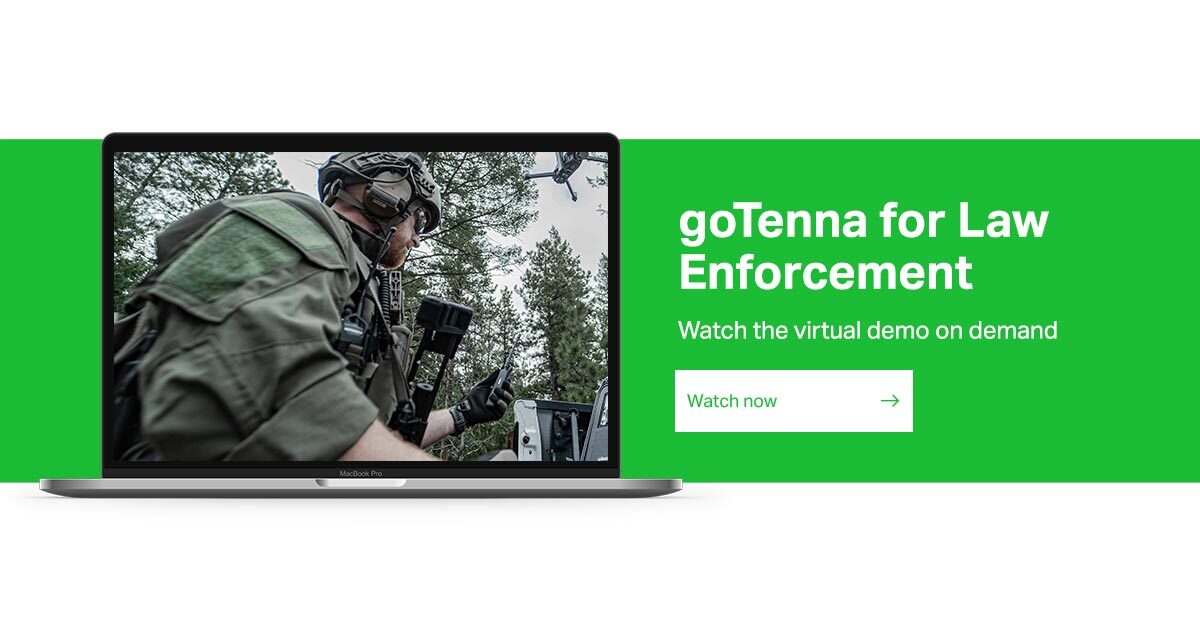New technologies essential for combating the smuggling crisis at the border

There have been more than 12,000 drug seizures at U.S. borders in the first three months of Fiscal Year 2023 alone. In that same period, there have been more than 860,000 enforcement actions undertaken by the agency. All of this comes at a time when the United States is seeing an unprecedented increase in illegal migration, with U.S. Customs and Border Protection (CBP) reporting nearly 3 million encounters of individuals crossing the U.S. border illegally in Fiscal Year 2022, breaking the previous record by more than one million. These conditions mean USBP and other law enforcement organizations have to deal with more people, more drug smuggling, and more illegal activity than in the past without similar increases in USBP Agent staffing.
This escalation in enforcement numbers comes at a time when smuggling across the U.S. southern border has also intensified. The border closings resulting from the U.S. government’s COVID-19 response pushed transnational criminal organizations (TCOs) to find other pathways to move illicit products and people across the border at a time when many legal border crossings were constrained or prohibited. According to the New York Times, the demand to get people and products into the U.S. has turned illegal smuggling into, “…an irresistible moneymaker for some cartels.”
With the emergency restrictions still in place (at least in the short-term) and the cartels becoming more active in the illegal transport of narcotics and migrants across the border, it is estimated that smuggling has ballooned into a $13 billion industry (up from $500 million in 2018).
The Biden administration recently announced new policy and enforcement actions designed to, “increase security at the border and reduce the number of individuals crossing unlawfully between ports of entry.” The complete list of actions being taken by the White House is available online, but the actions are generally designed to accomplish two goals:
- Expanding and expediting legal pathways for an orderly migration and creating new consequences for those who fail to use those legal pathways.
- Surging resources to the border and the region, scaling up anti-smuggling operations, and expanding coordination and support for border cities and non-governmental organizations.
These new actions and influx of new resources to the border will hopefully help alleviate a major public safety and humanitarian crisis. However, any investment at the border needs to include new or novel technologies that can help law enforcement officials stay a step ahead of criminal organizations and keep law enforcement personnel safe as they perform an incredibly dangerous job in remote, austere, and dangerous environments.
Cartel activity creates persistent danger and tech challenges
With cartels increasingly conducting smuggling activities at the southern border, there is a clear and present danger to law enforcement personnel. The smuggling activities do not come without violence and there is a significant and persistent threat of violence at the southern border.
The danger to USBP and other law enforcement personnel was explained by the former Chief of the U.S. Border Patrol, Chief Carla Provost in a 2021 interview with The Last Mile. In a far-ranging discussion that explored the challenges facing USBP Agents, Chief Provost said:
“When I was the interim Patrol Agent in Charge in Nogales we had agents get into a shootout with drug smugglers. In that particular region, the Agents had limited ability to retreat because of different mountain ranges. It was a very dangerous situation.”
Ongoing cartel activity doesn’t just increase the danger for Border Patrol personnel. The cartels also have the resources to deploy innovative technologies in their operations that create unique challenges when trying to identify, disrupt, and mitigate illicit activity.
While some low-tech smuggling operations are still conducted using rudimentary materials and procedures (some even involving things like pumpkins), there are notable examples of cartels leveraging more complex technologies (like drones) with increased frequency along the border. According to a recent local news article, “The Texas Department of Public Safety is seeing a steep increase in the use of drones on the part of criminal organizations to conduct surveillance on law enforcement along the border.” The article explains that cartels leverage drones to locate law enforcement personnel and operate in the areas where they aren’t.
goTenna heard about similar issues from Chief Provost, who explained how cartels operate in areas where they know law enforcement personnel lacked essential tools, like assured communications. According to Chief Provost:
“Criminals know that the Border Patrol has connectivity issues in certain areas and they concentrate their activities in those regions. And it’s not just the southern border that has a problem with this. The vastness of the northern border provides its own challenges.”
Technological investment at our border is needed to combat the TCOs conducting dangerous illicit activities daily. As investment increases at the border there are technologies that U.S. law enforcement organizations can deploy to keep personnel safe and combat the advanced technologies being leveraged by the cartels.
Mobile Mesh, Counter Unmanned Aerial Systems (CUAS), and Digital Sentry Towers
The steps proposed by the White House to solve the border crisis include an increase in investment and a surge of resources to federal and local law enforcement. This is a great opportunity to invest in the technologies that law enforcement personnel require to more effectively do their job and to solve their biggest problems.
Right now, one of the primary technology challenges facing law enforcement organizations at the border is the lack of assured communications and the inability to collaborate between organizations. The remote, austere nature of the area at and around our borders means that few terrestrial networks are available for law enforcement personnel, leaving them operating without the ability to call for help or coordinate on sensitive missions. The fact that multiple organizations (including federal and local law enforcement organizations) have to work together with disparate, interoperable communications systems makes collaboration a challenge.
If resources are going to be surged to the border to help in the ongoing humanitarian and public safety crisis, technologies that can enable assured communications even in the most remote and austere environments should be among them. And mobile mesh networking solutions are one of the most effective, interoperable, and easily deployed solutions for delivered assured comms.
Mobile mesh networks can enable law enforcement personnel to rapidly establish communications and situational awareness capabilities by creating mobile ad hoc networks. Leveraging mobile mesh networking can enable the following:
- Improved Rescue Capabilities. Many law enforcement agents and officers operate in small teams or even individually at times. Given the dangerous terrain, climate, and illegal activity at our borders there are times when law enforcement personnel need to be moved to safer conditions. Mobile mesh networks can be integrated with other technologies (such as video, voice, and other communications solutions) to create a comprehensive technology solution at the border. This enables Border Patrol Agents and specialty teams to carry out rescues more effectively and safely.
- Improved Manpower Disposition and Operational Situational Awareness. Border Patrol Agents have a multitude of missions to complete within the border enforcement zone and limited manpower with which to do so. goTenna and ATAK creates a “force multiplier” by enabling more efficient proactive and reactive responses to those in danger. The ability to use goTenna as a relay extends networks to improve situational awareness. Furthermore, the full spectrum of tools and plugins in the ATAK application can fill gaps that exist due to a lack of manpower.
- Operational Effectiveness. A mesh network allows Agents to identify anomalous activity before, during, and following operations – providing valuable information on the operating environment and how their presence may affect activity in the area. This enhanced understanding of how operations affect the situation on the ground can be a critical input into the mission planning cycle, allowing agents to use data to inform tactics, techniques, and procedures and drive mission effectiveness.
- Interoperability – Mobile mesh networking solutions integrate with virtually all of the smart devices that law enforcement agencies already carry every day. Utilizing mobile mesh and the TAK application on these devices can enable communications and situational awareness capabilities within and across organizations almost instantaneously. Perhaps most importantly, goTenna Pro radios combined with TAK or the goTenna Pro App allow federal, state, local, and tribal law enforcement officials to work together seamlessly, communicate on one platform completely off-the-grid, and maintain a unified common operating picture of what is happening on the ground.
Mobile mesh networking can also provide the backhaul necessary to leverage other advanced technologies that can help law enforcement protect the border. The ability to backhaul data from distant or remote areas is increasingly essential to help combat the new technologies that the cartels are leveraging in their smuggling operations. Solutions enhanced by using mobile mesh networking to backhaul data include:
- IoT sentry towers – leveraging AI-enabled sentry towers connected via mesh networks can enable Border Patrol and other law enforcement organizations to cover a greater area of the vast southern border, even when staff resources are limited. Solutions, like the sentry towers offered by Anduril Industries, can provide highly accurate, persistent autonomous awareness across land, sea, and air.
- Counter Unmanned Aerial Systems (CUAS) – as drones become more pervasive in illegal operations around the border, it is essential to leverage solutions that can negate malicious drone usage. Companies like D-Fend Solutions have developed new CUAS solutions that can integrate with mobile mesh networks, and identify and eliminate malicious drones with little collateral damage.
The ongoing public safety and humanitarian crisis at the U.S. border makes law enforcement operations more difficult and dangerous. Mobile mesh networks can protect law enforcement, NGOs, and communities while simultaneously aiding in the fight against transnational criminal organizations.
The White House’s actions to help stem the crisis at the border are an important step to combat the crisis at our border. However, the increased investment and the surge of resources will only be effective if advanced technologies are deployed to the border, as well. As Chief Provost once told The Last Mile:
“The Border Patrol needs to ensure that law enforcement has similar technology – or better technology – than the criminals.”
To learn more about how mobile mesh networking can provide an off-grid communications network for law enforcement personnel, click the links below:








No Comment